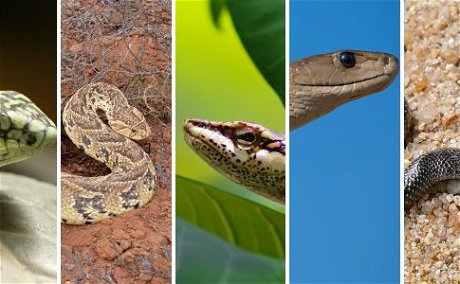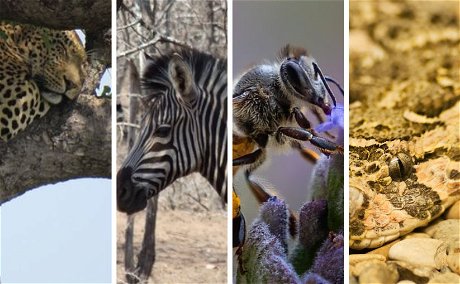Kruger National Park is a haven for diverse wildlife, including a variety of snakes that embody the park's ecological richness. From the fast and venomous Black Mamba to the camouflage expert Vine Snake, and the non-venomous Cape Wolf Snake, these serpents showcase the adaptability and diversity of life in Kruger.
The difference between a White and Black Rhino
Many people often get confused on safari by the names given to the two species of African Rhinoceros ie. Black or White and mistakenly think it comes from their skin colour. Here is a very brief comparative that will assist you in the correct identification.
Firstly their names have nothing to do with their skin colour, they are both typically greyish but this varies depending on what sand or mud they have been rolling in which can give them a black, white or even a red appearance. The trend is to now call them Square (white rhino) or hook lipped (black rhino) as this is more easily identifiable in their appearance.
Otherwise there are numerous physical differences between the two species:
White Rhino Black Rhino
Scientific name: Ceratotherium Simum Diceros Bicornis
Mass: 1700 - 2 300 kg 800 – 1 400 kg
Gestation period: 16 – 18 months 15 – 16 months
Speed: 50 km/h 55 km/h
Lifespan: 40 – 50 years 35 – 50 years
Mouth shape: square or flat hooked
Habitat: savanna grassland predominately bush & scrub
 This photograph clearly shows the square mouth of the white rhino
This photograph clearly shows the square mouth of the white rhino
The square lip of the white rhino facilitates the grazing of grass while the hooked lip of the black rhino allows them to easily browse on bushes and shrubs. Interestingly when grazing the female white rhino will keep her calf visible in the grassland in front of her whilst the black rhino's calf will follow its mother from behind as they travel through the bush as danger is not clearly visible through thick bush and the very protective mother will face danger first.
If you are on a morning walk in a game park (with guides of course) you can quite easily identify the dung of each species by breaking up the dung and one can clearly observe small twigs and branches in the black rhino dung as opposed to digested grass in that of the white rhino.
Further Reading
Studying these camouflage artists offers more than survival tactics; it unveils the symbiotic web of life. Each evolutionary adjustment triggers cascading effects, shaping predator-prey interactions, reproductive strategies, and even ecosystem architectures. For visitors to wilderness areas like Needles Lodge, these beings underscore nature's inventive prowess and the critical need to conserve the ecosystems that nurture such diversity.
Exploring Kruger National Park is a journey through Earth's geological history, showcasing ancient rocks, life's evolution, and dramatic landscapes. The park's diverse geology, from three-billion-year-old bedrock to recent Quaternary formations, reveals the planet's dynamic past. Highlights include the Lebombo Monocline and rich fossil records. This narrative emphasizes the importance of conservation and the unique opportunity to connect with Earth's ancient past at Needles Lodge.






Share This Post